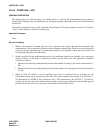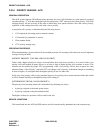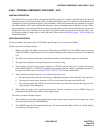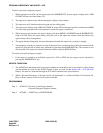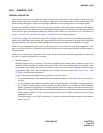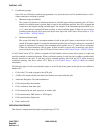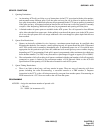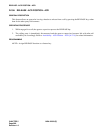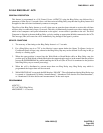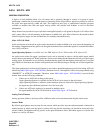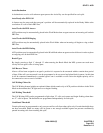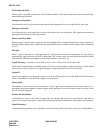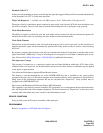
CHAPTER 5 NDA-24282 (E)
Page 286
Revision 1.0
QUEUING - ACD
2. Conditional queuing:
One of the two following conditions (programmed on a split-wide basis) will be checked before a call is
either connected to an agent or queued.
a. Minimum Agent Availability
The system will check for a minimum number of available agents before connecting the call. If the
number of available agents is greater than or equal to the minimum specified, the call is accepted and
connected to the longest-waiting available agent. For example, if the minimum agent threshold is set
at “3”, then calls are connected if there are three or more available agents. If there are two or fewer
available agents the call will be processed by the next step in the Call Control Vector (refer to “Call
Control Vector - ACD [C-108A]).
b. Maximum Queue Depth
The system will check for a maximum number of calls in the split’s queue, at the time the call is pre-
sented. If the queue depth is less than the maximum specified, the call may be queued or connected if
agents are available. For example, if the maximum queue depth is set at “3”, then calls are connected
if there are fewer than three calls in queue. If there are three or more calls in queue the call will be
processed by the next step in the Call Control Vector (refer to Call Control Vector - ACD [C-108A]).
A Call Control Vector (CCV), which is assigned to a Pilot Number, allows certain calls to queue to a split, and
specifies standard or conditional queuing. When conditional queuing is used, the type (condition) and threshold
must be selected for the split. A split may receive standard queuing calls from one CCV while receiving
conditional queuing calls from another CCV. Refer to Call Control Vector - ACD [C-108A] for related
information.
The following types of calls are permitted to queue to an ACD split when agents in the split are not available to
handle calls:
1. Calls to the C.O. trunk assigned to the ACD split.
2. A DID or Tie trunk call that dialed the Pilot Number associated with the split.
3. Automatic Ringdown Tie trunk terminations.
4. Calls transferred by the attendant.
5. Calls overflowed from other splits.
6. Calls forwarded by the split supervisor of another split.
7. Calls transferred by PBX stations or ACD agents.
8. Calls transferred by Night mode.
9. Direct station calls.
OPERATING PROCEDURE
This feature is implemented through the programming of CCVs.



